Nosocomial Infections & Control
A subset of infectious disorders obtained in a health-care facility is known as nosocomial infections, sometimes known as health-care-associated or hospital-acquired infections. The infection cannot be present at the time of admission; rather, it must develop at least 48 hours after admission to be deemed nosocomial. These infections can cause major complications such as sepsis and even death. The intensive care unit (ICU), where doctors treat critical disorders, is one of the most common wards where HAIs arise. A HAI affects about one out of every ten persons hospitalised to a hospital. They're also linked to high rates of morbidity, mortality, and hospitalisation. Infection control strategies, monitoring antimicrobial use and resistance, and implementing antibiotic control policies can all help to prevent nosocomial infections. At both the national and international levels, an effective surveillance system can help. To prevent and control nosocomial infections, all stakeholders must work together.
- Hospital Infection
- Device-Related Infections
- Surgical Site Infections
- Opportunistic Infections
- Epidemiology
- Disease Control and Prevention

Francis J Castellino
University of Notre Dame, United States
Ranjan Ramasamy
ID-FISH Technology, United States
Saurabh Chattopadhyay
University of Kentucky College of Medicine, United States
Alexis Torres Rodriguez
NewYork-Presbyterian Queens Hospital, United States
Rico Leonardo Lizbinski
Northern Light Health, United States
Sasha Leibholz
New York Presbyterian Columbia/Cornell, United States



Title : Changing population immunity to COVID-19 in the context of infection, vaccination, and emerging SARS-CoV-2 variants
Ranjan Ramasamy, ID-FISH Technology, United States
Title : Extensively drug-resistant bacterial infections: Confronting a global crisis with urgent solutions in prevention, surveillance, and treatment
Yazdan Mirzanejad, University of British Columbia, Canada
Title : Bioterrorism through the ages: Historical perspective, emerging threats, and medical countermeasures
Claudia Ferreira, Sorbonne University, France
Title : Measles vaccination coverage indicators in 2023 and advance towards measles elimination and eradication by 2030
Pedro Plans Rubio, College of Physicians of Barcelona, Spain
Title : Pathogen-derived noncanonical epitopes: Are they valuable targets for novel vaccinations and shall we be concerned about autoimmune responses?
Michele Mishto, Francis Crick Institute, United Kingdom
Title : Severe influenza and other related respiratory infection cases during Omicron era in Japan
Masafumi Seki, Saitama Medical University International Medical Center, Japan